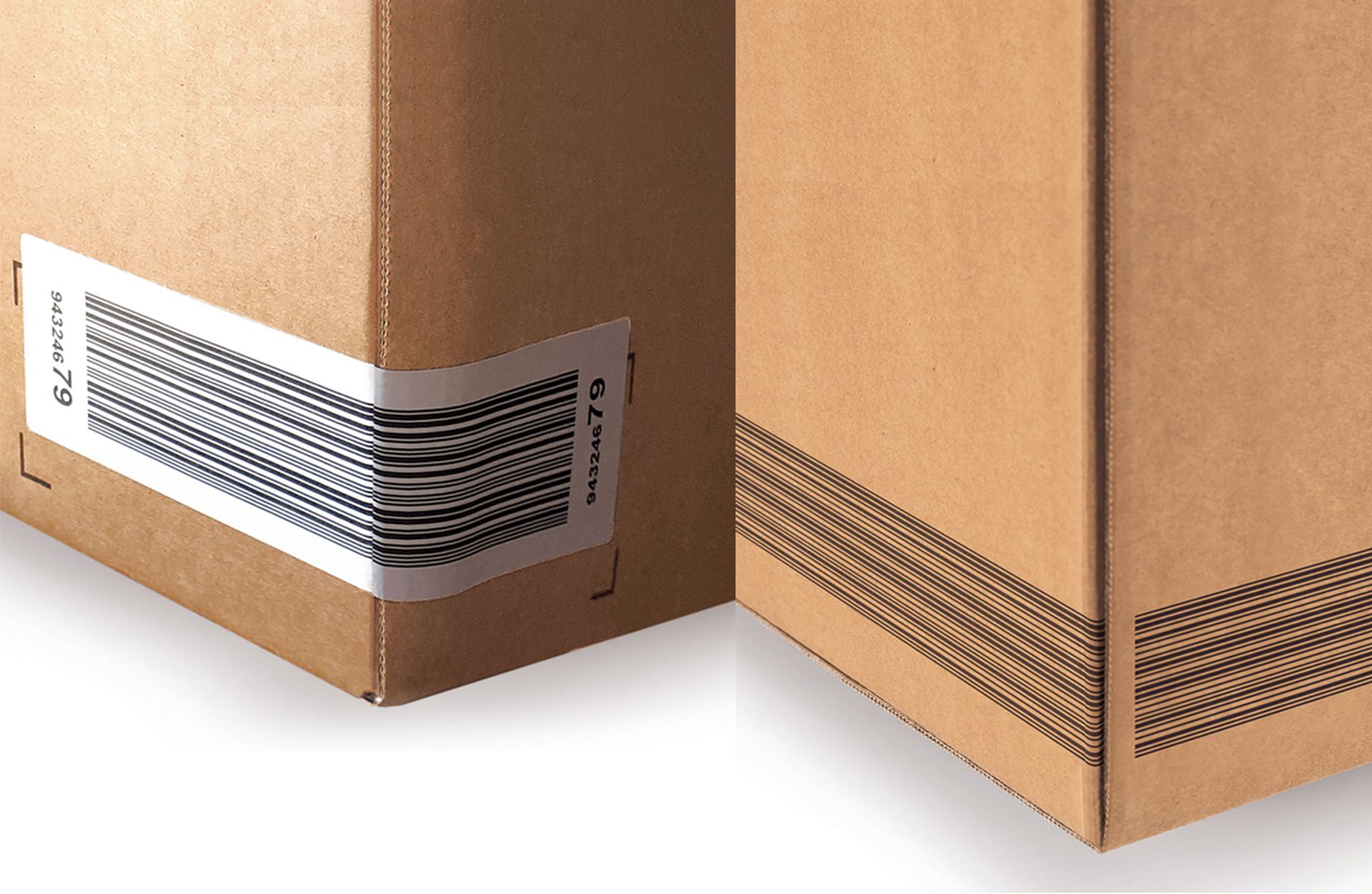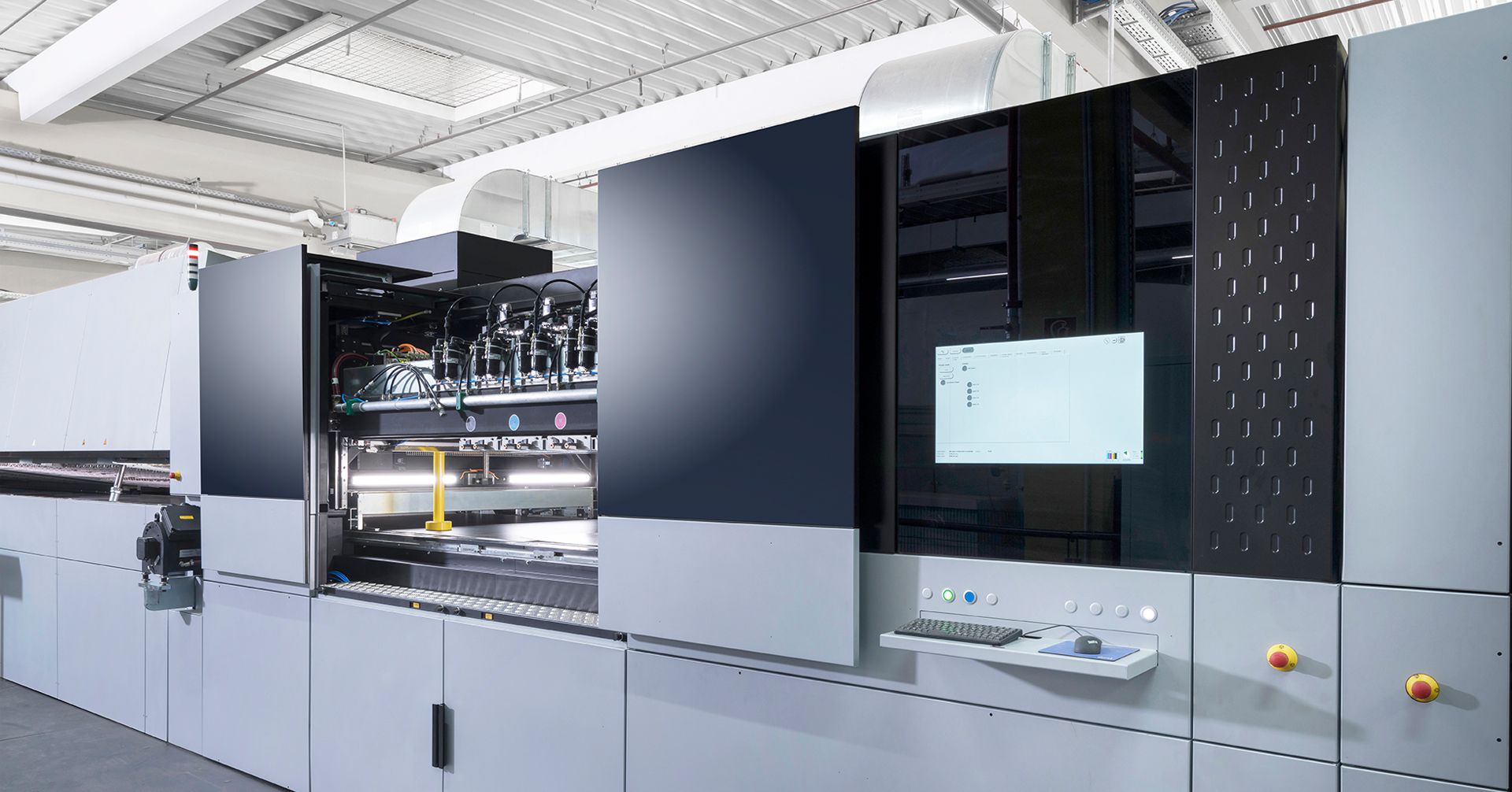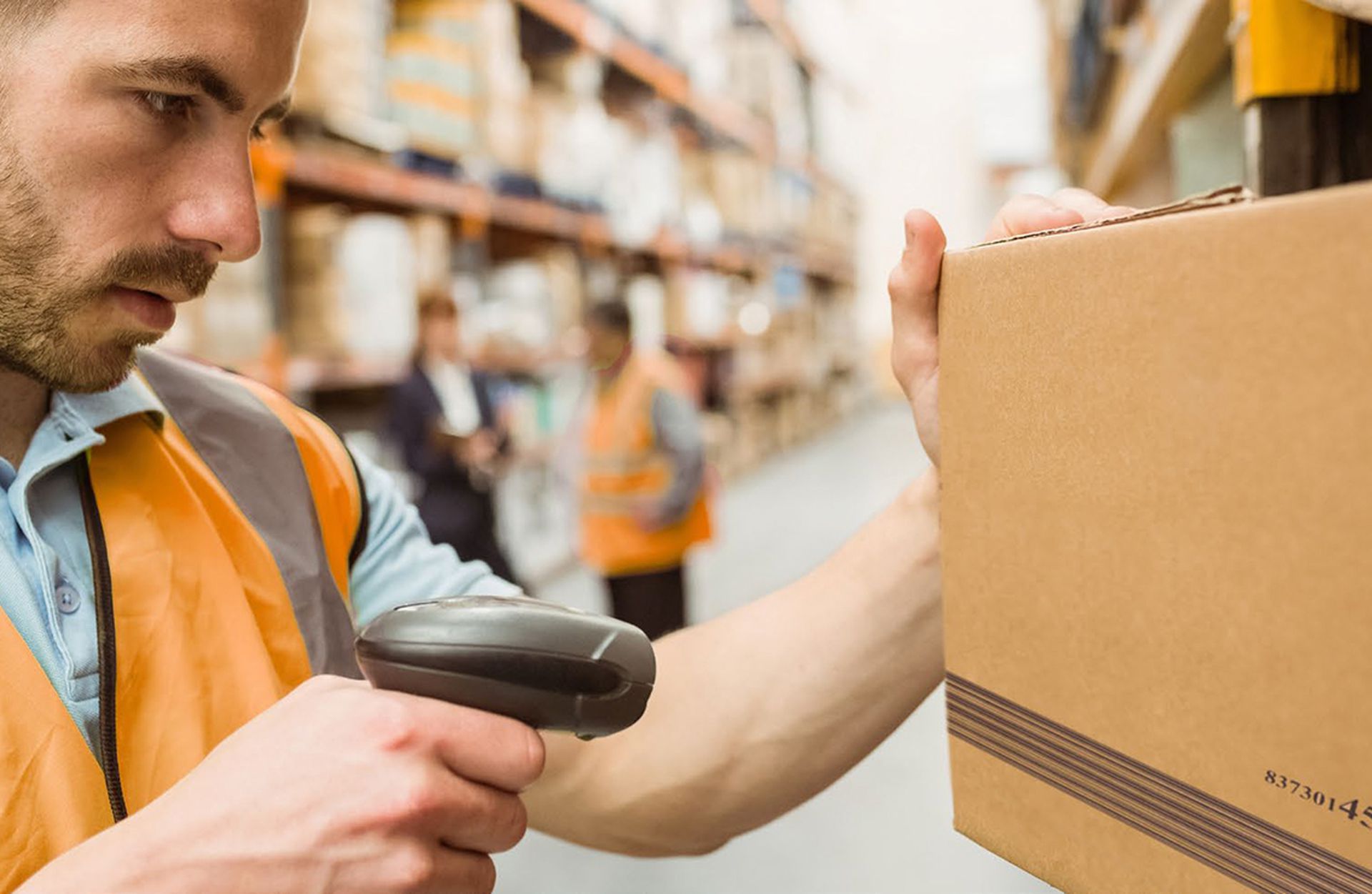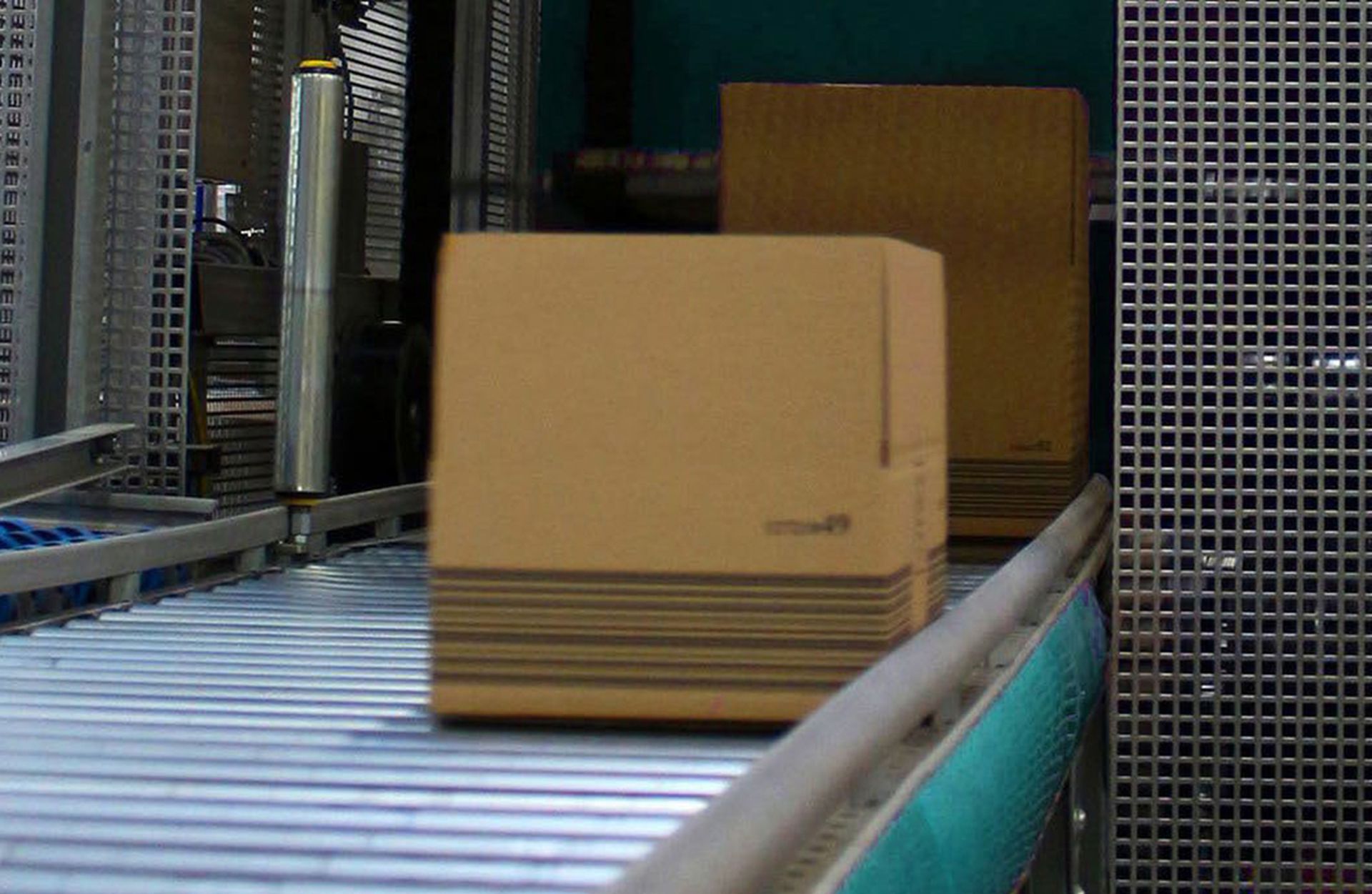These days, there is no need to go to the effort of labelling packets with barcode stickers.
Read here, how we at KOMSA have been able to cut out one of the process steps.
We apply barcodes during
production
Around 2.6 million packages containing IT and telecommunications technology left KOMSA - based in Hartmannsdorf, Germany - in the 2017/2018 financial year, destined for the more than 20,000 trading partners in Germany, Poland and other European countries as well as private and business consumers that the Group supplies on behalf of its partners. For the medium-sized wholesaler and service provider, this is a logistical challenge. With the wide range of customers, almost no two packages are the same. All packages must run through a package line where they are made ready for transport before beginning their journey with one of the various shipping providers. Each box receives its own specific barcode in order to manage the packaging process.
Thanks to the innovative spirit of KOMSA's packaging partner and market leader in the field of variable data printing, the Schumacher Packaging Group, we were able to cut out one of the process steps - the application of barcode labels. Instead, the code is added to the packaging boxes during production.
We can confirm –
Labelling packages is
only the second-best option
KOMSA has used barcodes for years, in order to be able to clearly identify each package across the entire packaging line. The information continuously read by 60 scanners which allocate each box to its order and recipient. This means you can quickly and reliably identify which products, information and advertising material, delivery notes, repair manuals etc. should be included with the package.
At the end of the packaging process, the shipping department uses the barcode to find out the recipient's address and information about the responsible logistics partner. "Previously, the barcodes were printed on white paper and stuck onto the corners of the assembled boxes using a label dispenser", explains Andrea Fiedler, company spokesperson at KOMSA. "As the KOMSA customers expect their deliveries as soon as possible and KOMSA therefore constantly strives to optimise the shipping process, the obvious alternative seemed to be to print the barcode on to the boxes during the manufacturing process and thereby save valuable time.
Together with our long-time business partner, Schumacher Packaging, we have tried and tested various solutions." For example, integrating a tool in the gluing machine that sprays on the barcode. Unfortunately, the results were not satisfactory - all too often, barcodes were completely illegible or they were read incorrectly. We didn't achieve lasting success until Schumacher Packaging became the first packaging manufacturer in Europe to introduce mass volume digital printing technology into the company.
Production plant
or ICE?
"Our team was incredibly impressed the first time we saw the new digital printing line" remarks Fiedler. "It reminded us of an ICE." Thanks to a print speed of over 9000 square metres per hour, the modern digital printing plants not only offered the ideal conditions for mass volume production of large print runs, but also the option to print customised packaging – with personalised images and
texts, serial numbers and consecutively numbered barcodes.
The devil is in the detail for only so long -
until we take care of it
Initially, Schumacher Packaging determined the exact position of the imprints. "This was somewhat tricky – after all, six consecutive barcodes are printed simultaneously on the sheet of corrugated board, which is then die cut into six boxes", explains Frank Stefan, Client adviser at Schumacher Packaging, "but we had no real issues printing a serial code. We only encountered a problem
when the first test prints for KOMSA came off the line."
We eliminate problems
together
The barcodes KOMSA had used previously had a white background. This meant that the barcode specification was designed to create a clean, easy to read print image. However, the packaging has a brown outer surface. The low contrast between the brown surface and the black barcode lines meant readability was significantly impaired. It was not possible to accurately identify the packages. In addition, the contours achieved by the spray technology used in digital printing were not quite as clean as those produced by the direct thermal printing used for the barcode labels.
"The differences were not noticeable to the human eye but, together with the lower level of contrast, they caused considerable problems for our scanners along the whole packaging line", Fiedler explains. However, the intensive and ultimately successful cooperation between KOMSA and Schumacher Packaging led to a pragmatic and economical solution. "This is exactly what our long-term and intensive partnership with Schumacher Packaging is all about: Employees are on hand whenever we need help. They are also full of ideas on how to improve processes," says Fiedler.
We just keep tweaking
until it works
Extra help in reading
The solution seemed to be first, to readjust the scanners and, as an example, to optimise the distance between the scanners and the package, or to optimise the reading frequency – the built-in scanners automatically read the code 28 times per second and determine the result from those readings. "At the same time, it was important that the reading speed did not decrease; after all, we wanted to make our packaging process quicker", said Andrea Fiedler.
Black on white
The main cause of the reading problems were the colour and quality of the brown outer surface. It therefore made sense to also change the material used. Schumacher Packaging had their specialists develop a paper with the appropriate surface quality and manufacture it in their own paper mill. The contrast improved significantly; however, the scanners continued to make too many errors when reading the barcodes.
Old barcode – made new
Past experiences, particularly when resetting the scanners, led us to one conclusion: The barcode must be re-scaled to increase its readability. "Each barcode has its very own specification. This determines details such as the wide/narrow bar width ratios and the relative size of the light margins. As long as we moved within the boundaries of this specification, we were free to re-scale the line pattern", commented Fiedler. "Our IT and pre-press specialists at Schumacher Packaging ran through several different variants until they came up with the best possible barcode re-design for us. And their efforts paid off - now, Schumacher Packaging supplies all our packaging with a pre-printed barcode – and we are really very happy with the quality."
Transferability and
four-side printing
The barcode specifications are now so precise that we can introduce new package sizes without having to make difficult adjustments. "All we do is enter the altered size ratios into our digital printing machine - and that's it, done", declares Frank Stefan. "And KOMSA informs us which series of numbers is available for the consecutive numbering. After all, no number must be repeated." Another advantage is that the digitally printed code is now no longer on just two sides, as it was previously, but on all four sides of the package. "Even if a package happens to turn around on the conveyor belt in the packaging line, the scanners are now guaranteed not to scan an empty side. One less error source" Fiedler is pleased to say and adds: "What's more, the barcode scaling and optimisation of the scanner units have brought such good results that we can continue to use our brown packaging material. Switching to white paper would have led to higher material costs."
CONTACT US.
We make smart barcode solutions
for you, too.

Hello!
My name is Jochen Drösel. My team and I are the people that make things happen at Schumacher Packaging. However unique your requirements, we create custom solutions, perfectly tailored to your needs. We look forward to hearing from you!





